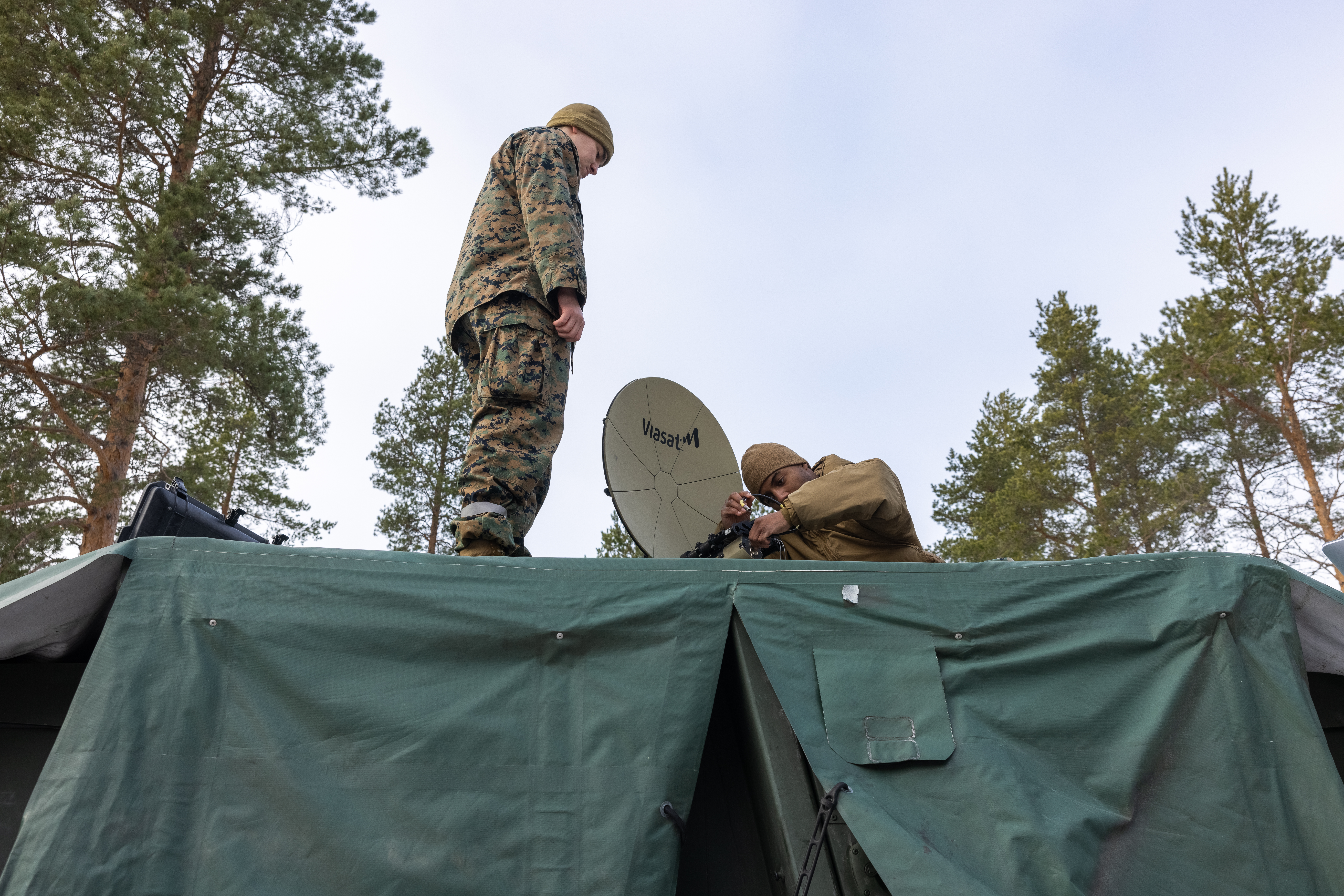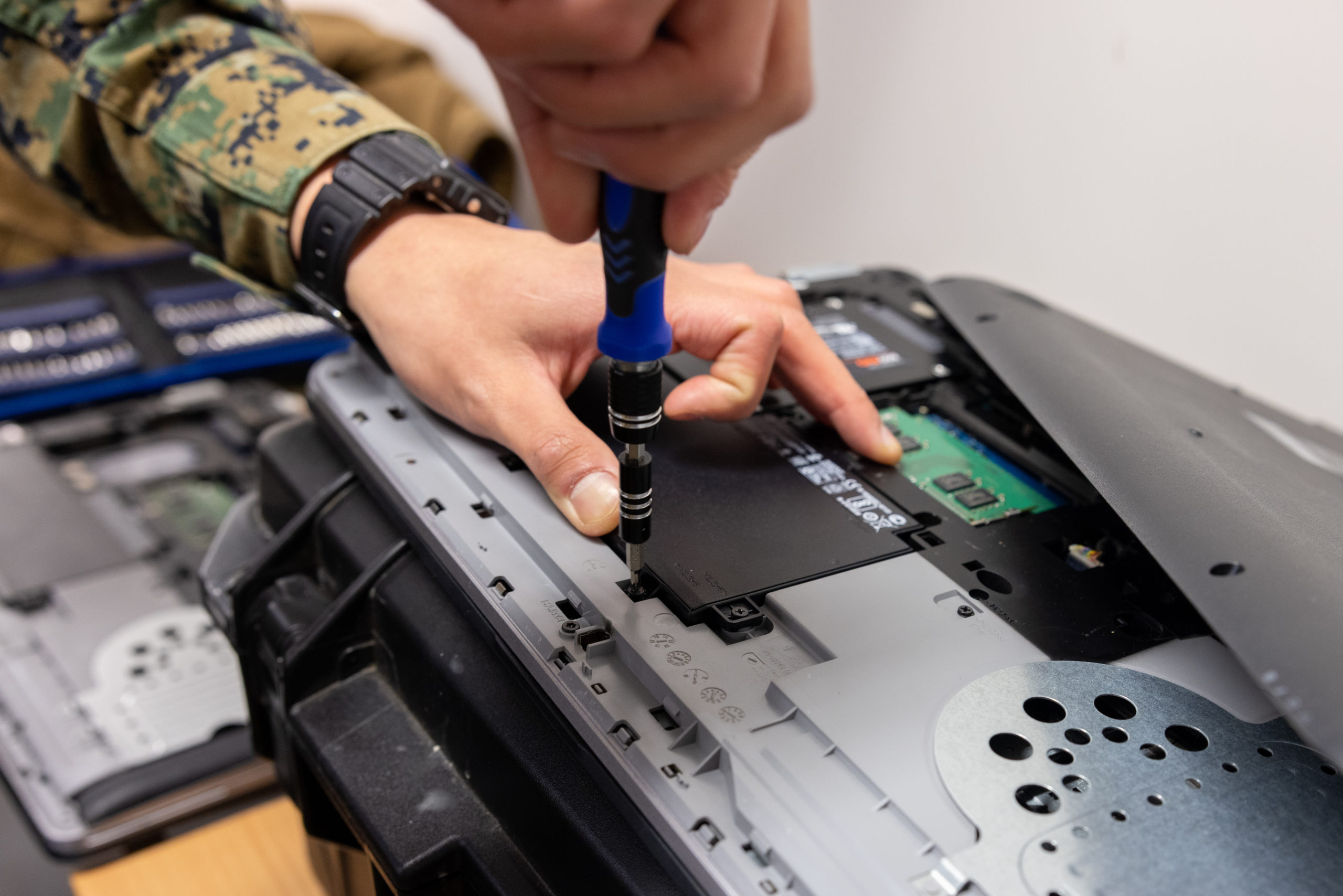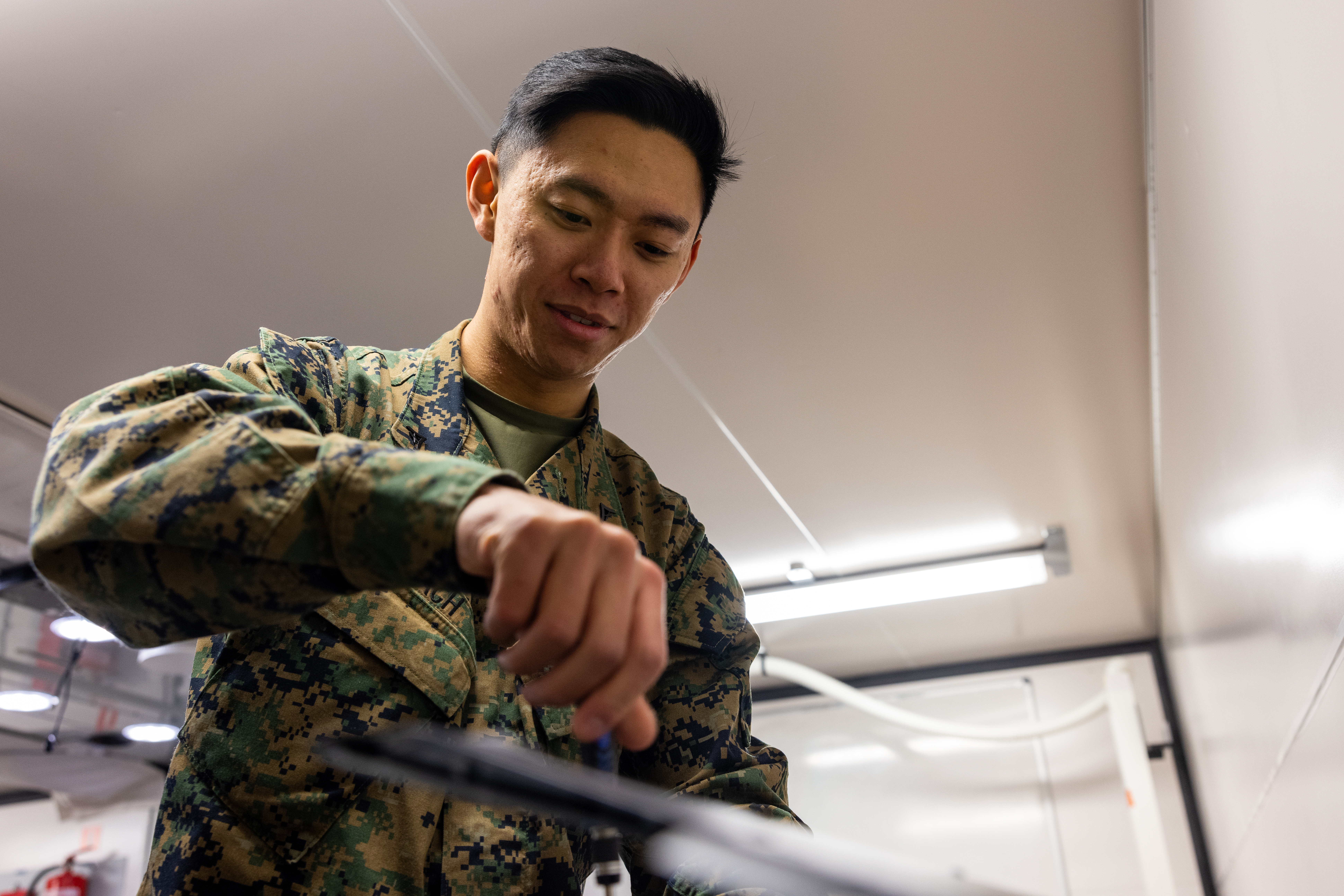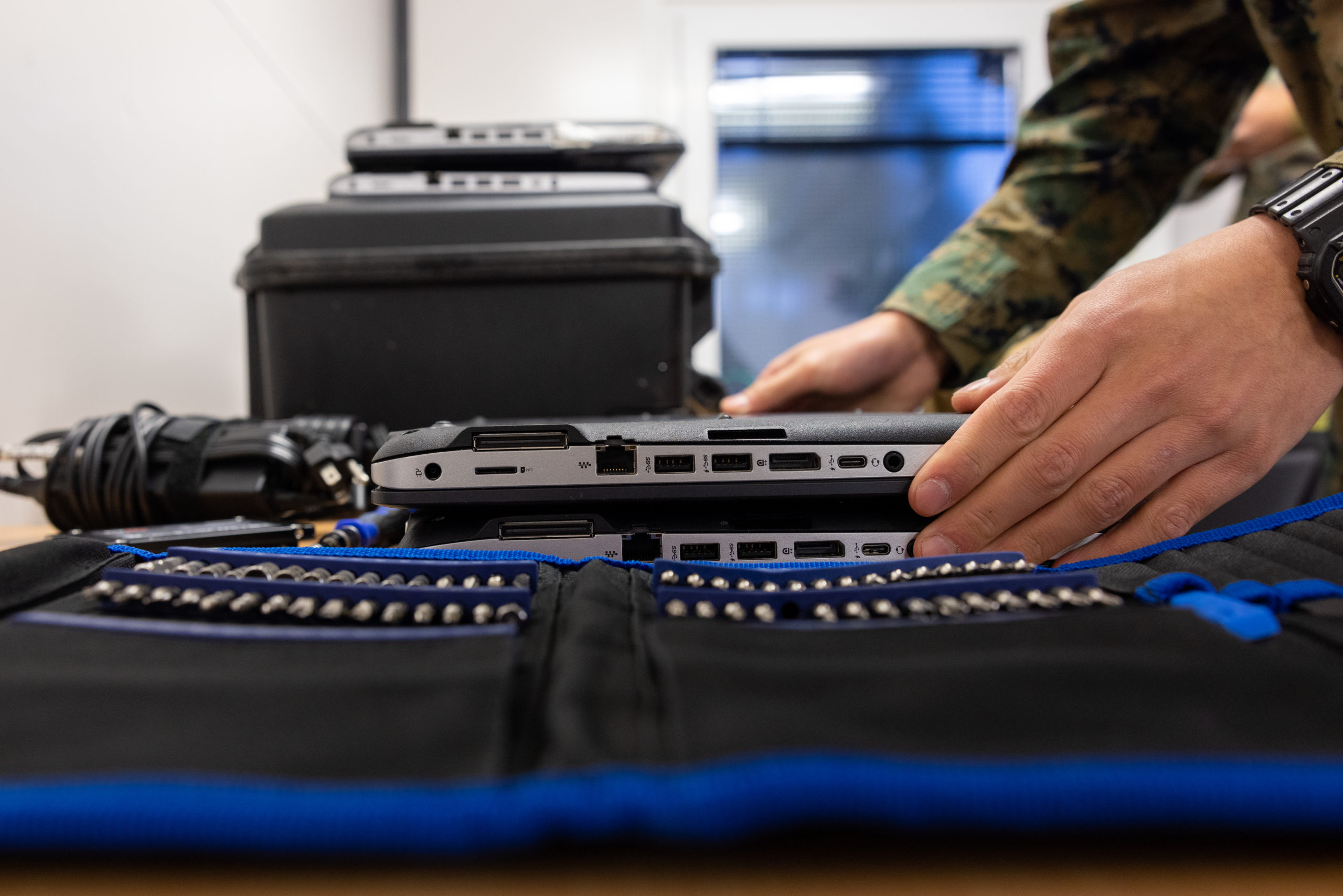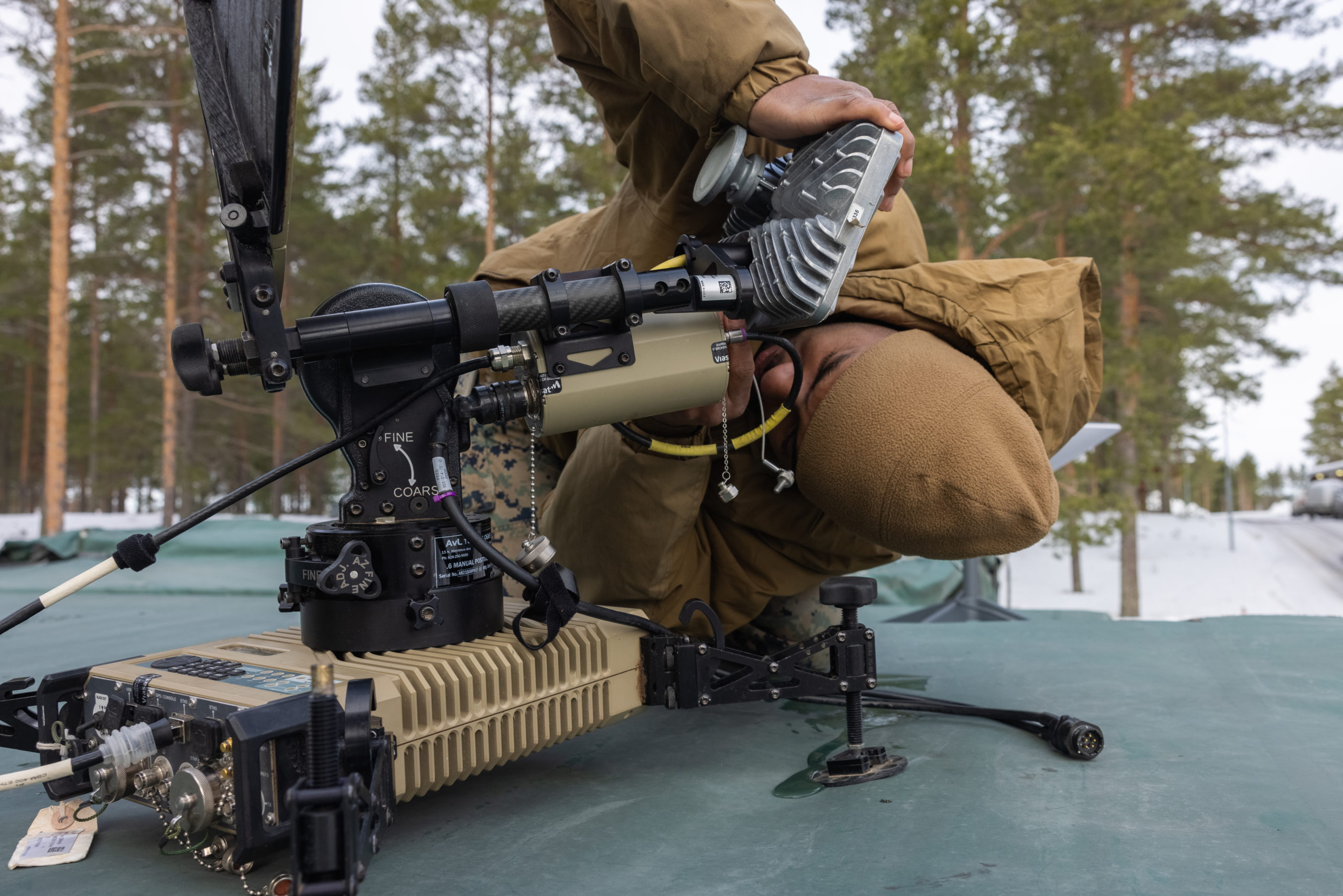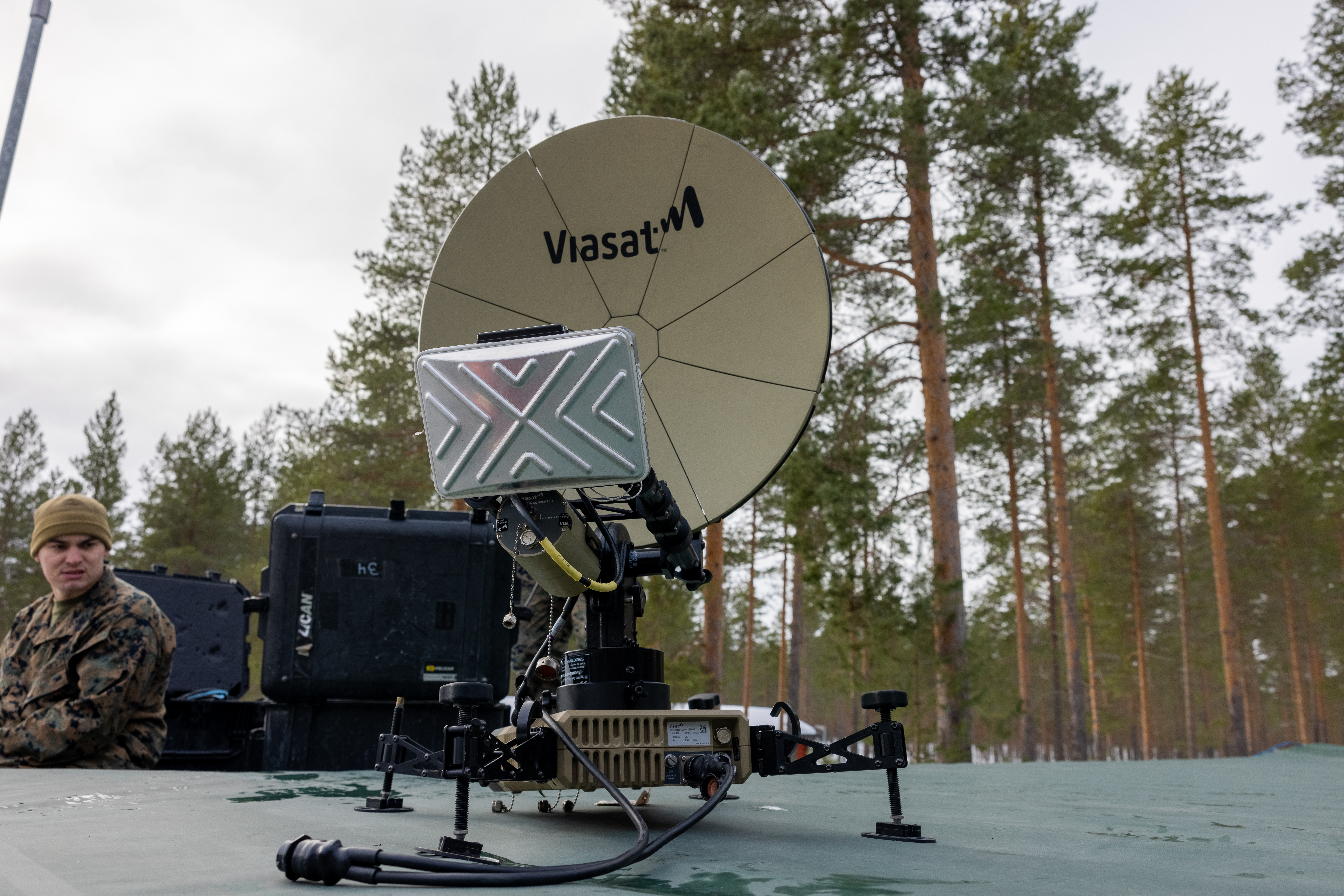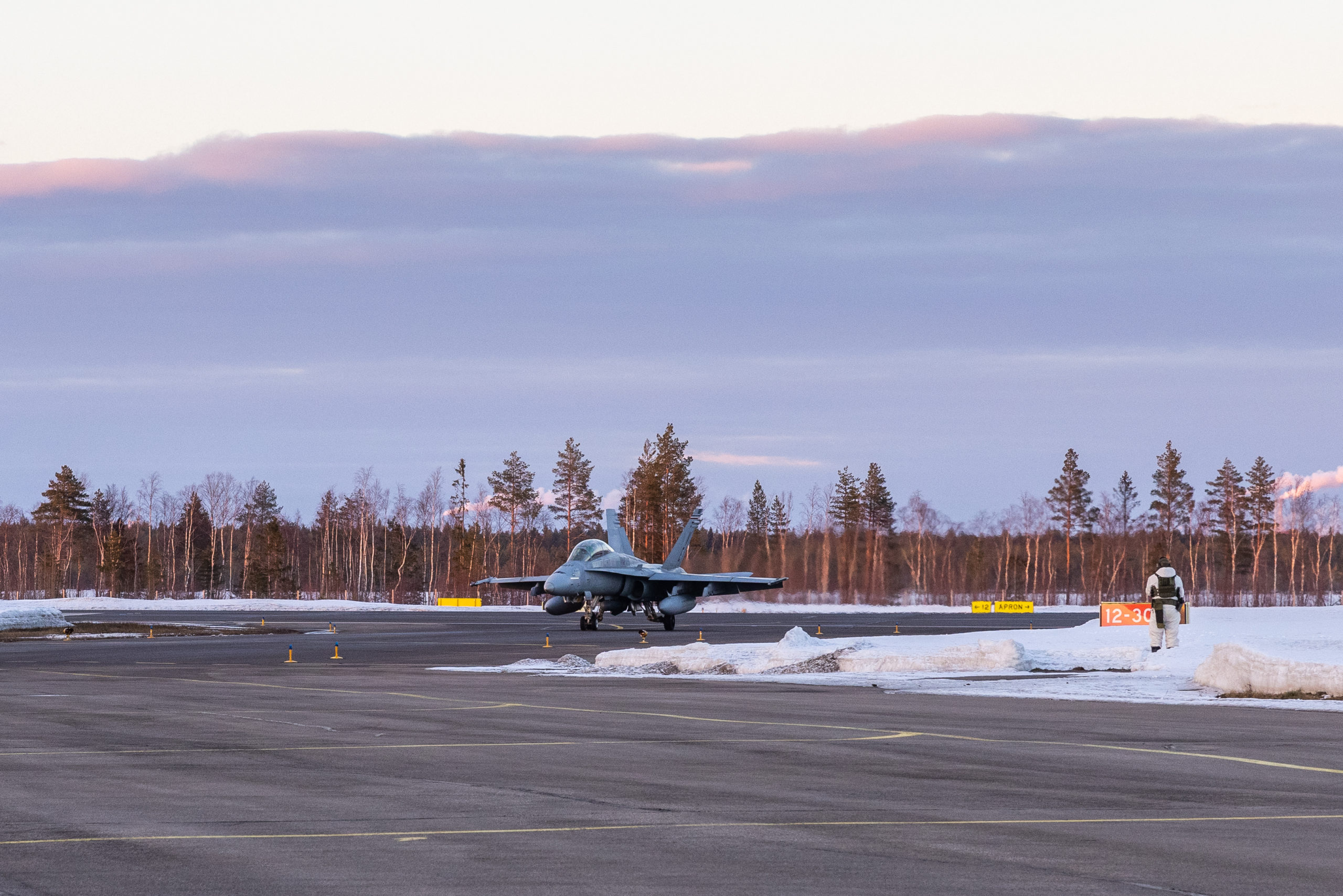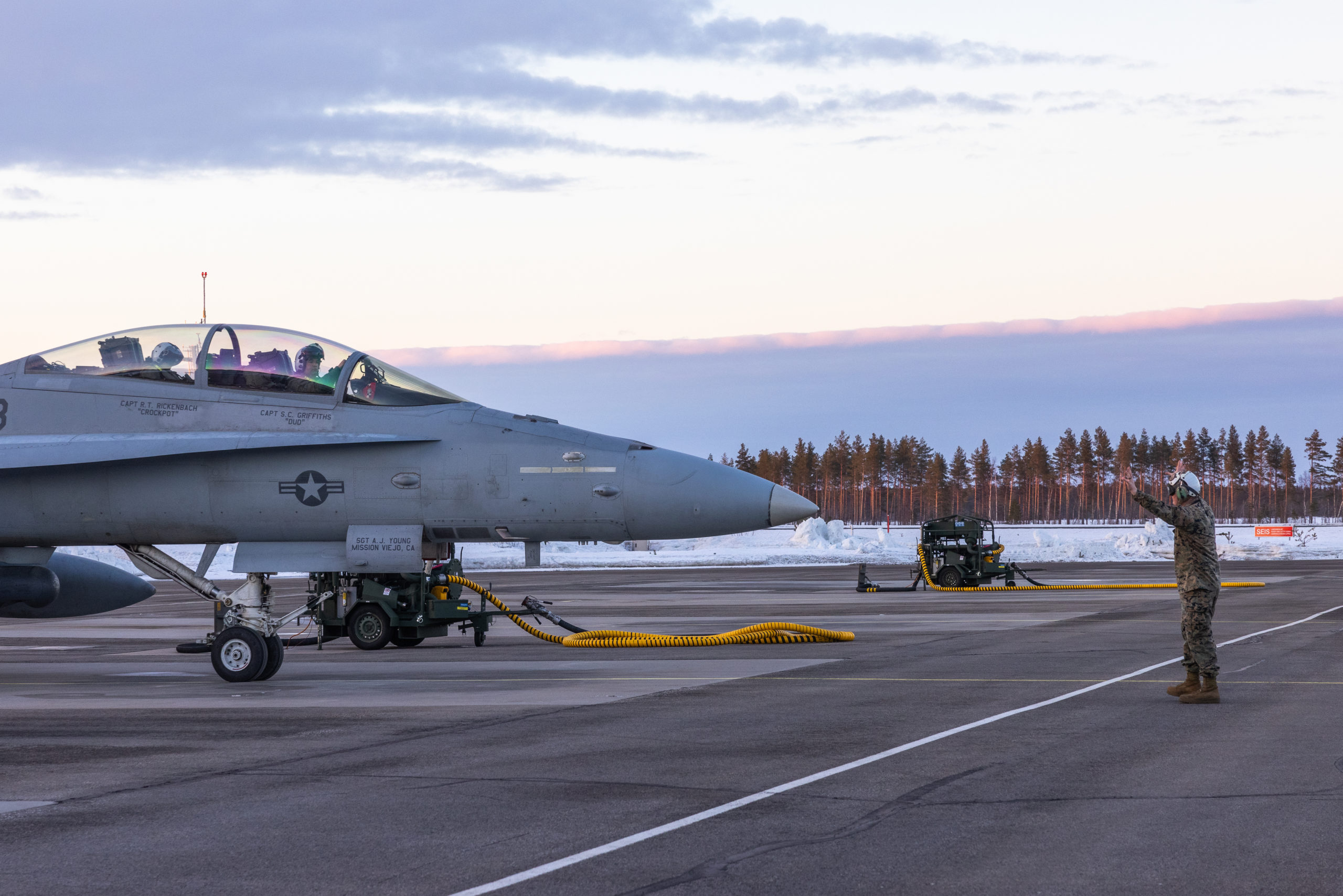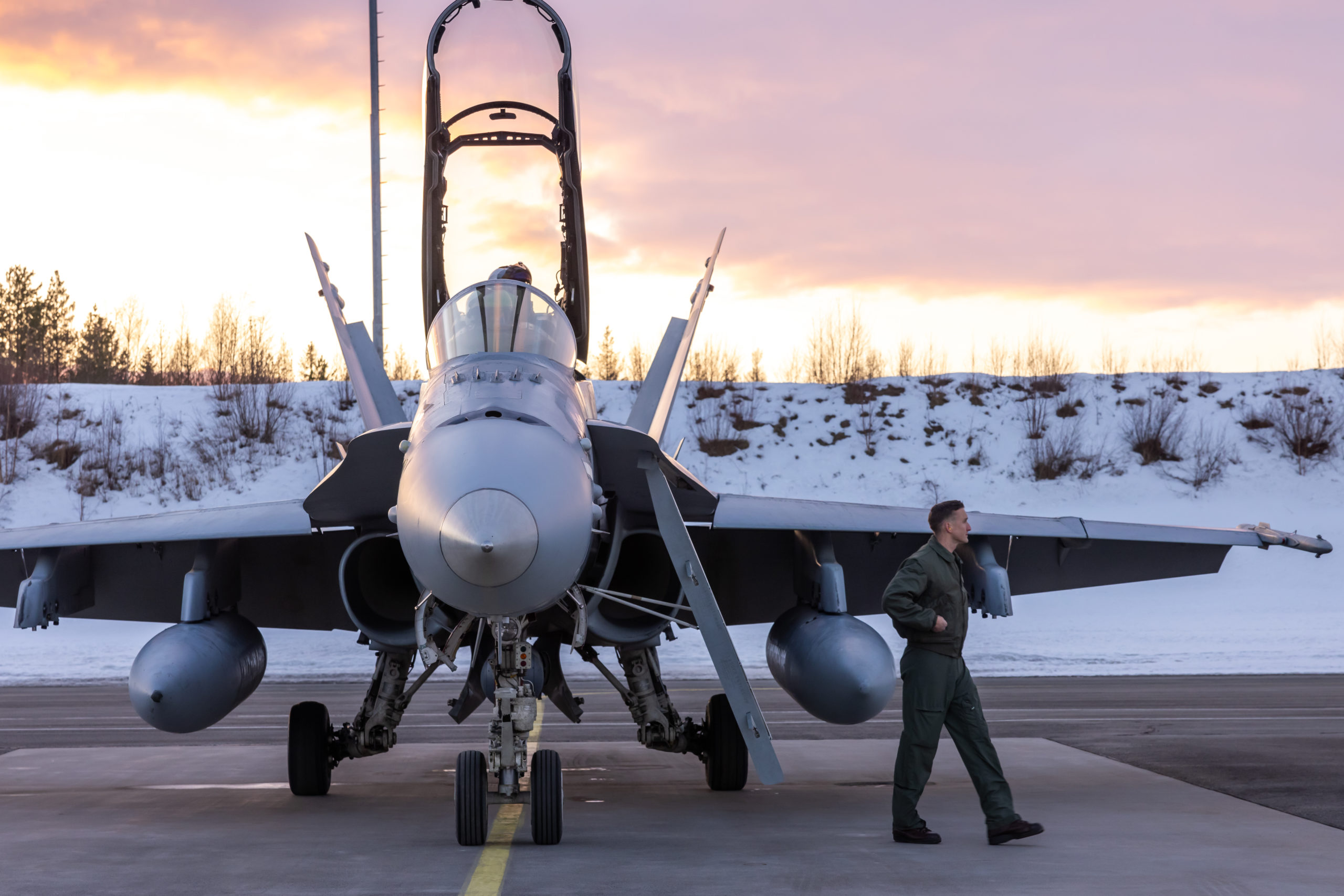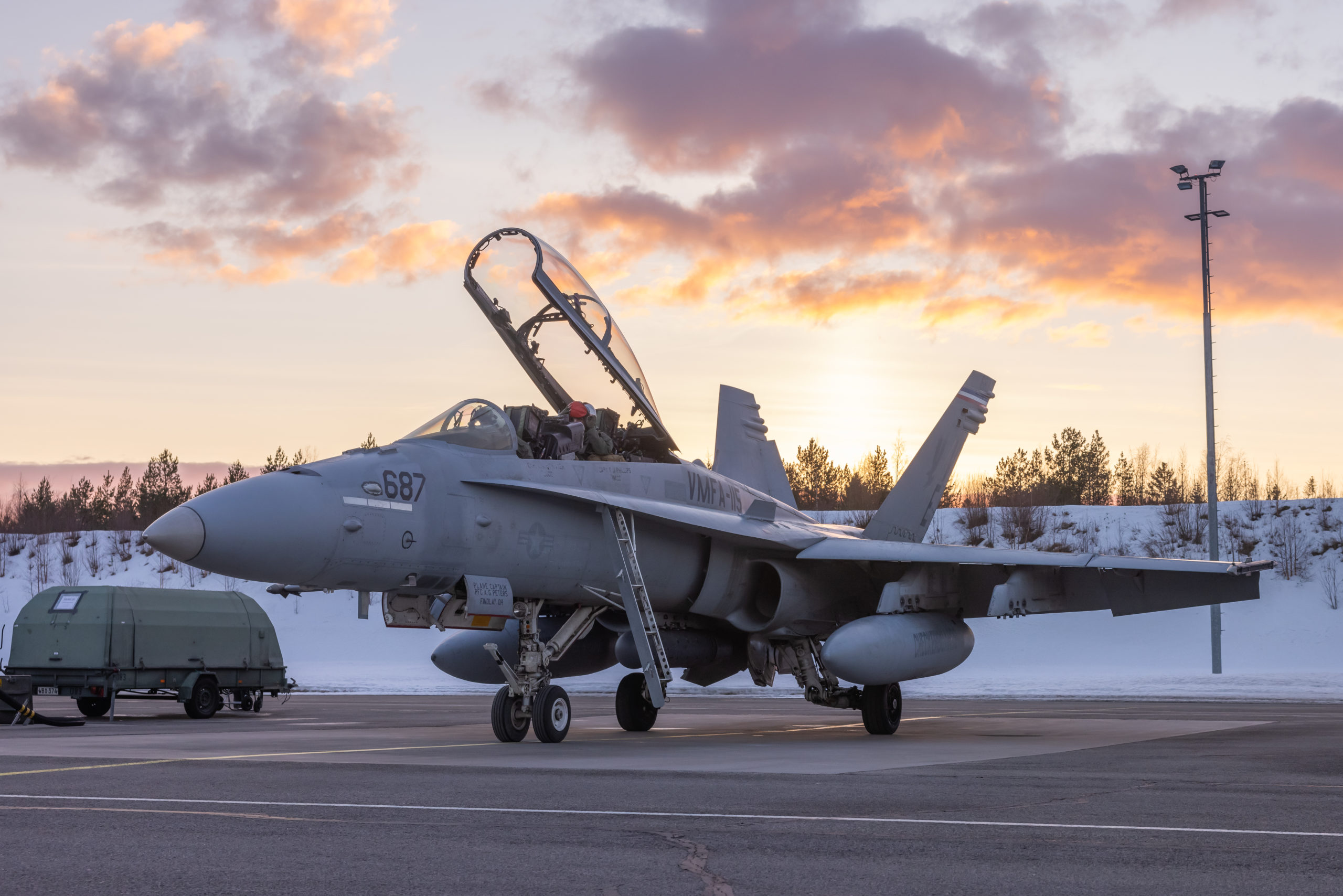By Robbin Laird
On July 9, 2024, I had the opportunity to visit MWCS-28 which in English is Marine Wing Communications Squadron 28. The squadron provides expeditionary communications for the aviation combat element of the II Marine Expeditionary Force. They are based at Marine Corps Air Station Cherry Point and fall under the command of Marine Air Control Group 28 and the 2nd Marine Aircraft Wing.
I was privileged to have a robust representation of the squadron and an opportunity to have a wide-ranging discussion of their approach and their recent engagement in the Nordic region in support of the Wing’s most recent Arctic exercise.
Present at the discussion were Maj. Mikel Santiago, operations officer, Lt. Col. Craig Schnappinger, commanding officer, MWCS-28, MGySgt Marcus Jackson, communications chief, MWCS-28, Maj. Richard Wise, Deputy Assistant Chief of Staff, 2nd MAW G-6, 1st Lt. Kara Paradowski, communications officer, MWCS-28, and 1st Lt. Bennett Lax, communications officer, MWCS-28.
It was an interesting group to discuss the way ahead with as two of the Marines were in the first tour of duty along with Marines which much combat experience.
The nature of the challenge set for the command was outlined during my interview in June with the then CG of 2nd MAW, Maj. Gen. Benedict. In that interview, he described 2nd MAW’s time in Nordic Response 2024 when a key focus was upon distributed aviation operations.
As he described the challenge: While a FARP remains the most visible manifestation of DO, it is the final action and does not by itself reflect significant choices and work necessary to create that capability to re-arm air assets at remote and ever-changing locations – allowing the force to disaggregate for protection and then aggregate to mass combat capability, all in a rapid manner to maintain tempo.
As MajGen Benedict put it: “The difference is the backside. Where is the location? Why that location? How do we get the fuel there? How do we get ordinance there? How do we provide force protection? How do we maintain the aircraft and for how long? How long are we going to be there? When do we need to move? All of these things are what I call the backside of distributed operations.”
MWCS-28 was working the C2 support to 2nd MAW in support of distributed aviation operations. And we discussed this along with correlated issues.
The conversation focused on the need for a fresh approach to command and control, logistics, and force distribution in the Nordic Region. Speakers emphasized the importance of understanding new technologies and integrating them into existing command structures. They also discussed the challenges of modernizing military infrastructure and investing in mobile capabilities.
Additionally, they highlighted the significance of interoperability, communication, and redesigning Command and Control systems to accommodate small form factors and user-friendly interfaces.
And a key point was that the Marines used various COTS equipment, but as they desire to use such equipment goes up notably in the C2 area, it is imperative to ensure proper training and maintenance procedures are in place for the deployed personnel to have the ability to make full use of the equipment in the most effective manner possible.
The clear purpose of working distributed forces is to enhance survivability but this has to be done within the logic of what is feasible. So this means discrete numbers of movement with the ability of C2 to support such movement.
This was exercised during Nordic Response 24, and as one Marine put it: “We utilized existing Marine Corps assets and commercial off the shelf assets in order to make ourselves more survivable and less prone to being identified hiding within the noise, so to speak. We were operating within existing infrastructure and bases that are already owned and operated by the Norwegians and working closely with them as well.”
In other words, the Marines were working distributed aviation operations but within a Nordic/NATO operating space.
But the integration piece within the Nordic operating space is a work in progress and part of the evolution of C2 capability in general which is required going forward. DAO in the Nordic case to be most effective is not a pickup piece but a planned and thought through concept of operations piece, and in my view, something 2nd MAW can excel at as the Nordics work their defense integration efforts.
There is no part of the world with more experience at operating a protected and distributed force than the Nordics and coming from North Carolina, the 2nd MAW Marines can contribute and learn how to seamless integrate into regional distribution of forces.
The challenge is significant as well as the opportunities for innovation.


